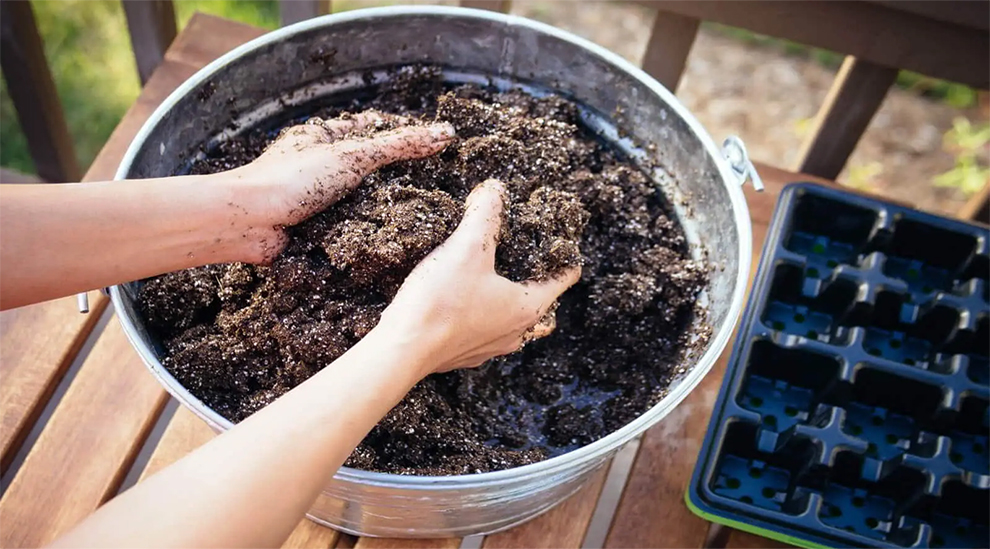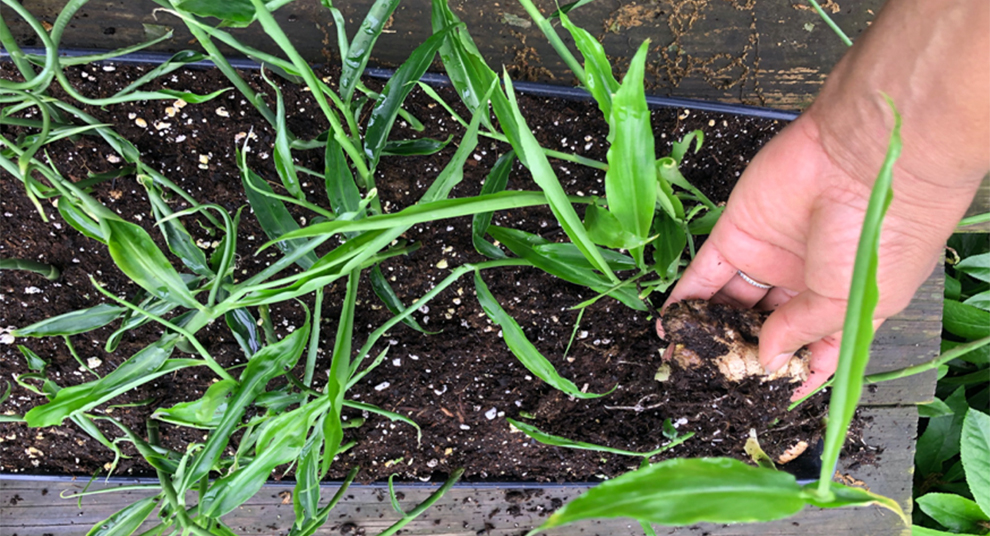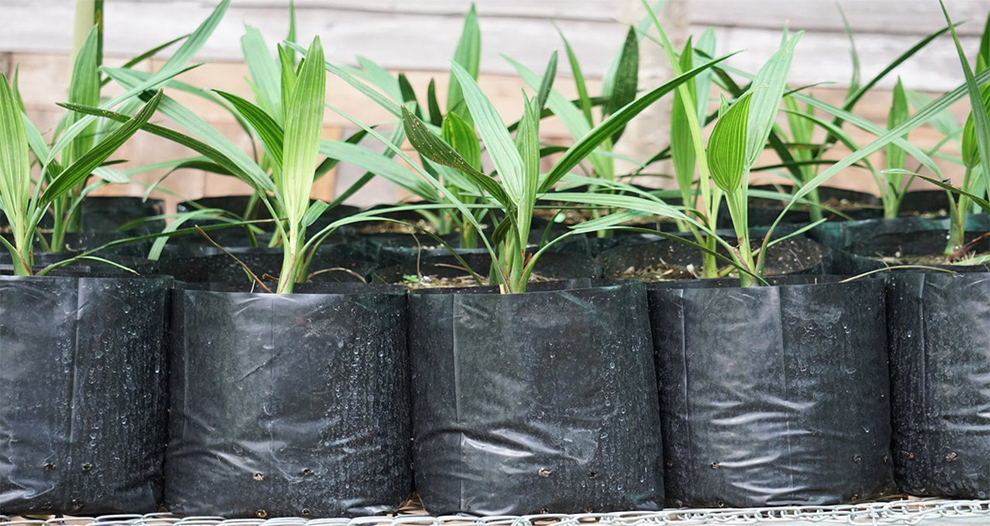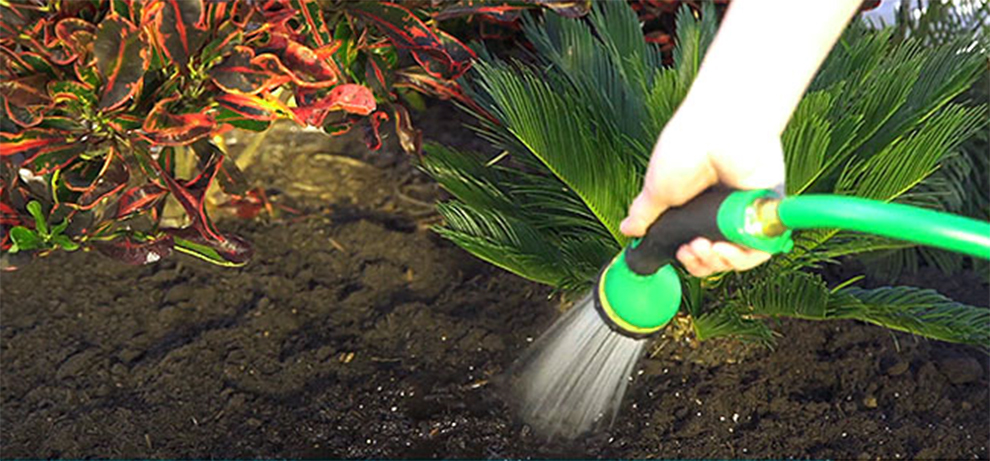How To Plant A Saw Palmetto Tree + Seed Growing & Care Guide
There are two ways to grow saw palmetto. One is to collect the seeds, prep and sow it to grow saw palmetto from scratch. Second is to buy an established plant and grow it in a permanent location.

Palmetto trees are an excellent choice for landscaping. They are popular trees among plant lovers because of their striking appearance and ability to endure harsh weather conditions. If you want to grow this variety, but don’t know how to plant a Palmetto tree, worry not!
There are two main techniques – through a store-bought plant or seeds.
Gather the ripe seeds from the mature trees to grow the Palmetto trees from seeds. After you have the seeds, soak them in the water for a few days for germination. Then, plant them in well-draining soil.
Keep it moist until the seeds start sprouting. It may take several weeks for the seeds to germinate and develop into a small tree.
Alternatively, buy a store-bought Palmetto tree from the garden center or a nursery. These trees are already established and might come with some mature fronds.
How to grow Saw Palmetto plant bought from a nursery?
Simply, dig a hole bigger than the tree’s root ball, and place the tree into this hole to a similar depth as the original plant. Cover the root ball with soil, ensuring the tree is well-supported and straight. Water it regularly and ensure it has ample access to sunshine.
Whatever method you choose, it is easy to grow Palmetto trees if you know the trick. Read below as we discuss how to plant and care for the Palmetto trees in greater detail.
How To Grow Saw Palmetto From Seed?
To grow the Saw Palmetto from seeds, plant them in a warm and sunny location with well-draining soil and keep the soil adequately moist until germination occurs. It can take several months.
| Scientific name | Serenoa repens |
| Plant family | Arecaceae |
| Seed sowing time (indoor) | Late winter or early spring, approximately 3-4 months before the last expected frost in your area |
| Seed sowing time (outdoor) | Late fall or early winter, after the last expected frost in your area |
| How deep to plant the seeds? | 1 inch (2.5 cm) deep |
| Germination temperature | 70-85°F (21-29°C) |
| Time to germinate | 2 to 6 months or longer |
| Growth habit | Low-growing shrubs or small trees with fan-shaped palm leaves |
| Mature size | Up to 10 feet (3 meters) tall and wide |
| Palmetto palm tree care | Full sun to partial shade, well-drained sandy or loamy soil, pH range between 6.0 and 8.0, drought-tolerant, low-nutrient soil, minimal fertilization, occasional pruning to remove dead or damaged fronds |
| Native to | Southeastern United States, particularly Florida |
A. Procuring the seeds
You can procure the Palmetto seeds from nurseries or online sellers specializing in native plants. Alternatively, you can collect the seeds from a ripe fruit that falls from the tree.
It is imperative to ensure that the seeds chosen are fresh and have not dried out or been exposed to high temperatures, as that may hamper their viability.
B. Pre-soaking the seeds
Gardening enthusiasts suggest you soak the Saw Palmetto seeds a day or two before you plant them. It helps break down the seed coat and boosts the germination process. Keep the seeds in a container and cover them with room-temperature water.
Once the soaking period ends, drain the water, and plant these seeds as usual. Please do not soak the seeds too long. It may lead to root rot.
C. Planting the seeds

Planting the Palmetto seeds is easy. You can follow the steps for fruitful results:
- Pick a well-draining site that has a pH between 6.0 and 7.0.
- Fill in the individual pots or trays with the soil mix and moisten it.
- Keep one or two Saw Palmetto seeds on top of the soil in each container, and cover them with a thin soil layer.
- Water the seeds gently for the soil to settle.
- Place the seed tray or pots in a sunny and warm location, such as the greenhouse or windowsill.
- Keep the soil moist and not waterlogged. It helps avoid letting it dry wholly.
- Germination usually takes several months. So, be patient and care for the plant well for the seeds to sprout wonderfully.
So, follow these steps to the T, and after you see the seedling growing up to a few inches tall, you can transplant it into a large container or directly into the ground in a sunny and warm location.
Ideal Conditions for Germination

If you know how to plant a Palmetto tree seed but do not follow the post plantation care, you may not see timely germination. So, here are the tips for Palmetto seed germination care:
1. Watering – Keep the Palmetto seeds continually moist. However, do not waterlog them. Ensure the soil does not dry out completely, as it can kill the seeds. Water the seeds consistently and gently by misting or using a watering can with a fine sprout.
2. Location – You must plant the Palmetto seeds in a sunny, warm spot, receiving ample partial or full sunlight. The seeds thrive in well-draining soil but can also tolerate acidic to alkaline conditions with a pH between 6.0 and 7.0.
3. Temperature – For Saw Palmetto, the temperature should be between 75 and 85 degrees Fahrenheit for germination. The germination process may stop completely or slow down if the temperature drops below this level.
4. Mulch – Mulching the soil surrounding the seeds is imperative to maintainconsistent moisture levels and avoid weed growth. You can use a light organic mulch layer comprising shredded bark or leaves but do not cover the seeds directly.
Transferring The Seedlings

The transplantation drill is crucial in learning how to grow Saw Palmetto plant. If done incorrectly, it can kill the plant. After the seedlings show and develop a few inches tall, you can transplant them into the ground or a larger container.
Here are the steps you need to follow to transfer the seedlings:
- Pick a well-draining soil mix with a pH between 6.0 and 7.0 for transplanting. If planting into the ground directly, opt for a well-draining and sunny location.
- Water the seedlings well before transplanting to avoid transplant shock.
- Remove the seedlings from the original containers by cautiously loosening the soil around the roots with your fingers or via a small tool.
- Make a hole into the soil in the ground or the transplanting container, somewhat larger than the seedling’s root ball.
- Insert this seedling into the hole, ensuring the root ball’s top is at par with the soil surface.
- Fill the hole with soil and tap it gently around the seedling. It helps eliminate all the air pockets.
- Water this newly transplanted seedling well and assess the soil moisture levels for the initial few weeks.
- Acclimate the seedlings gently to outdoor conditions by amplifying the exposure to the wind and sun for the next few days.
Planting The Palmetto Tree That Is Already Established (Store-Bought Plant)
Here are the steps to follow to plant a live Palmetto plant:
A. Location: Where does Saw Palmetto grow best?
Saw Palmetto is a palm variety native to Southeastern America, particularly the coastal regions from Florida to South Carolina. You can also find it in parts of Southern California. As for the habitat, look for a sunny spot with well-draining, sandy soil to plant the Palmetto tree.
They thrive in coastal regions with access to high humidity and salt spray. It can grow in various settings, like dry prairies, pine flatwoods, and coastal dunes. The plant goes best in regions with a Mediterranean or subtropical climate, warm temperature, and well-drained soil.
B. Soil
Saw Palmetto prefer well-drained soils that are loamy or sandy, but they can tolerate slightly acidic to alkaline soil in pH ranging between 6.0 and 8.0.
If planting a small Palmetto tree, ensure the soil is well-drained so it does not become waterlogged, as it may lead to root rot and other problems. To ensure proper drainage, add organic matter like leaf mold or compost to the soil or plant it in a raised bed.
Understanding the choice of soil is crucial to know how to care for Palmetto trees and plant them well.
Saw Palmetto also cherishes soil that is low in nutrients. So, do not fertilize or use unnecessary amendments to the soil. Let the tree draw nutrients from the soil naturally.
C. Distance
Generally speaking, Saw Palmetto grows quite large, with mature plants reaching approximately 10 feet high with an equal spread. So, when planting the Saw Palmetto, you must give the plant ample space to grow.
Plant the Saw Palmetto at least six feet apart. It gives them enough room to expand to the full size. But if you plant multiple trees, you may want to space them further apart to ensure they have ample space to spread out.
Another crucial step in understanding long-term Palmetto palm tree care is planting them at the correct depth and leaving ample space between two plants.
As for the planting depth, dig a hole somewhat wider and deeper than the root ball of the Palmetto tree. The idea is to ensure the root ball is at the level with the surrounding soil. Do not plant too deep, as that may suffocate the plant and prevent it from growing well.
After planting, water it thoroughly, allowing the soil to settle around the roots and promote healthy growth.
Once the above precautions are in place, you need to follow the below-listed steps for planting the Palmetto tree:
- Gently remove the Palmetto tree from the container and loosen the soil around the roots if they look rootbound.
- Place the tree in the center of the hole and ensure that the root ball’s top is at par with the surrounding level.
- Backfill the hole with the removed soil, and tamp it down gently around the tree to remove any air pockets.
- Water these Palmetto trees well to help settle the soil and help with root growth.
- Apply a thick layer of organic mulch comprising leaves or shredded bark around the tree’s base. It will help retain the soil moisture and suppress weed growth.
- Monitor the soil moisture levels regularly and water the Palmetto tree when the soil feels dry.
- Provide ample sun and protection from the strong winds till the tree becomes established.
Related: Fan Palm Types | Different Kinds of Dwarf Palm Trees | Most Popular Palm Trees
How To Care For A Palmetto Palm Tree Post-Planting?

If you have grown a palmetto from seeds or planted a tiny plant, in both cases you must take adequate care to ensure that it establishes well and grows into a healthy and strong tree.
Here are the tips you need to follow to care for the Palmetto trees post-planting
1. Watering – Generally, the Saw Palmetto is drought-tolerant. However, the newly planted trees demand regular watering. They must establish their root system.
So, water them deeply once or twice weekly for the initial few months from planting. Further, gradually lower the watering frequency as the tree establishes. Be careful and not overwater, as it may lead to root rot.
2. Mulching
Mulching around the tree’s base can help prevent weed growth and conserve moisture. So, apply a thick layer of organic mulch comprising shredded leaves or wood chips, ensuring you do not pile the mulch against the tree’s trunk.
3. Fertilizing – Saw Palmetto does not need a lot of fertilizer. However, you can use a slow-release fertilizer every once or twice a year to help with healthy growth. Do not over-fertilize, as it may do more harm than good.
4. Bracing, if needed
Saw Palmetto has a robust, wind-resistant structure that lets them withstand hurricane-force winds and endure harsh weather conditions.
But in some cases, the newly planted or the young trees may demand additional support to establish a solid root system and avoid damage from heavy rain or high winds.
So, if you are worried about stability, bracing is how to care for Palmetto trees to avoid this problem. While bracing, pick durable, solid materials like wooden stakes, wire, or steel cables, ensuring that the materials are rust-resistant and can endure exposure to the elements.
Also, you do not need to brace the entire tree. Assess the tree properly and see which part needs support, such as the branches or the trunk. Next, ascertain the total stakes or braces you need based on the tree’s weight and size.
Lastly, ensure the braces are installed securely into the ground and are at least 1/3 of the tree’s height. Please note bracing is temporary and must only be used until the tree is established and cannot support itself.
5. Pruning – Saw Palmetto is low-maintenance and does not need heavy pruning. However, you can remove the damaged or dead fronds as required to keep the tree looking tidy and neat. Do not remove too many fronds in one go, as that may stress the plant.
6. Pest control
Saw Palmetto is resistant to diseases and pests. However, monitor regularly for signs of infestation or damage. Use a pesticide for treating the issue.
But, whenever you notice severe problems, speak to a professional arborist and get advice on treating the issue.
Now you know how to plant a Palmetto tree seed and grow a baby plant directly. Follow the growing guide to enjoy the beauty of these magnificent trees.
